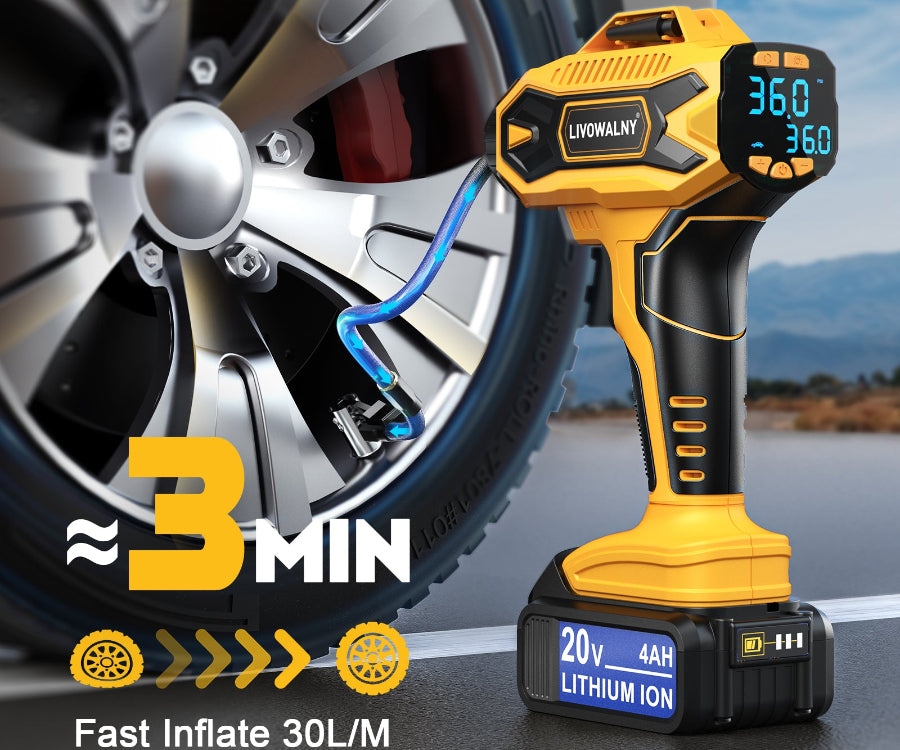
HOW LONG DOES IT TAKE TO INFLATE A TIRE WITH A MANUAL VS. CORDLESS INFLATOR
When your tire pressure drops - at home, in the middle of a road trip, or on a remote trail—having the right inflator on hand makes all the difference. But if you’ve ever wondered just how much time you’re saving with a cordless tire inflator compared to a traditional manual pump, you’re not alone. In this blog, we break down the average inflation times and the key differences between these two types of tools.
Manual Inflators: Cheap, Reliable, but Time-Consuming
Manual tire inflators, like hand pumps or foot pumps, are often praised for their simplicity and reliability. No need for power outlets, batteries, or electronics—just muscle and patience.
Average inflation time (for a standard car tire): 10 - 20 minutes
That number can vary depending on:
- The type and size of the pump
- The person’s strength and endurance
- Tire size and how flat it is
For a fully deflated tire, expect a serious workout. It’s doable in a pinch, especially for bike tires or small inflatables, but not ideal for car or truck tires unless you have no other choice.
Cordless Inflators: Speed Meets Convenience
Cordless (battery-powered) inflators are becoming a favorite among DIYers, commuters, and road warriors alike. Just attach the hose, set the target PSI, and press a button. They automatically shut off when the pressure is reached.
Average inflation time (for a standard car tire): 3 - 7 minutes
Why they’re faster:
- Built-in brushless motors do the heavy lifting
- Consistent airflow rate (typically 15–35 L/min depending on the model)
- Feature digital pressure gauges and preset modes
Key Factors That Affect Inflation Time
Regardless of the inflator type, a few variables influence how long inflation takes:
Initial tire pressure - Topping off a slightly low tire takes less time than inflating from flat.
Tire size - Larger tires (like those off-road vehicles) require more air volume.
Inflator power/output - Measured in liters per minute (L/min), a higher flow rate means faster inflation.
Battery level (cordless inflators) - A low battery can slow down performance or stall inflation altogether.
If you only need to inflate a bicycle tire once in a while, a manual pump might be all you need. But if you're dealing with car tires regularly - or want a quick, hassle-free solution - a cordless inflator is well worth the investment. You’ll not only save time but also skip the sweat and strain that come with pumping by hand. So, the next time your tire pressure warning light comes on, ask yourself: Do you want a workout… or do you want to get back on the road in minutes?






